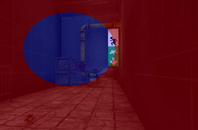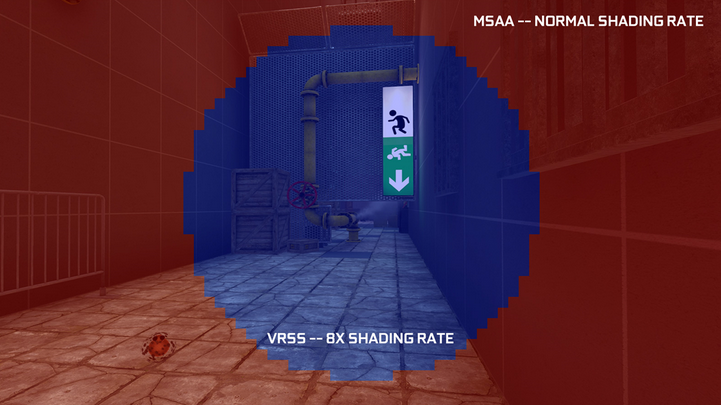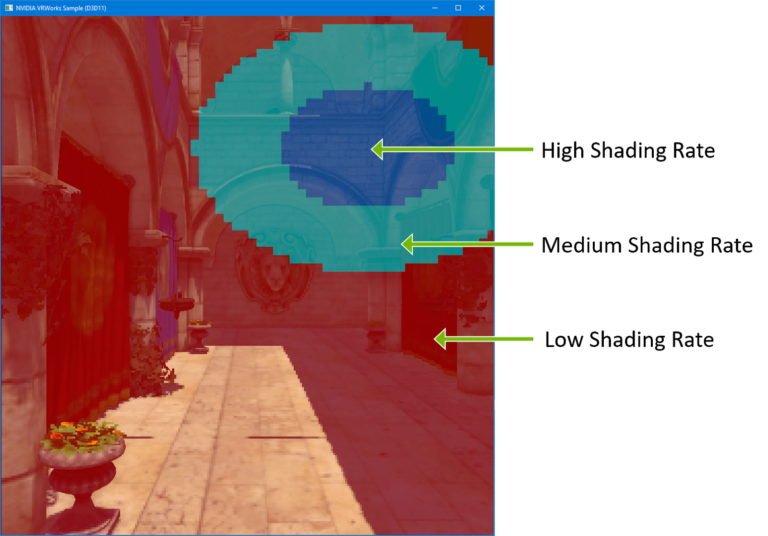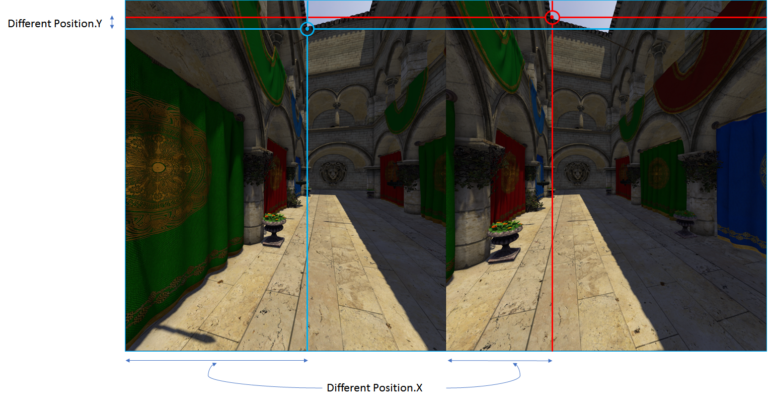
Designing rich content and graphics for VR experiences means creating complex materials and high-resolution textures. But rendering all that content at VR resolutions and frame rates can be challenging, especially when rendering at the highest quality. You can address this challenge by using variable rate shading (VRS) to focus shader resources on certain parts of an image��specifically��
]]>
For information about VRSS 2, see Delivering Dynamic Foveated Rendering with NVIDIA VRSS 2. The Virtual Reality (VR) industry is in the midst of a new hardware cycle �C higher resolution headsets and better optics being the key focus points for the device manufacturers. Similarly on the software front, there has been a wave of content-rich applications and an emphasis on flawless VR��
]]>
We introduced Variable Rate Shading (VRS) last year with the Turing architecture. This new, easy to implement rendering technique allows developers to vary the amount of processing power spent across the image, to spend time and increase quality in the areas where they are most needed. Since virtual reality demands both a high performance and a high image quality, VRS is the perfect fit for VR��
]]>
VR head-mounted displays (HMDs) continue to dramatically improve with each generation. Resolution, refresh rate, field of view, and other features bring unique challenges to the table. The NVIDIA VRWorks Graphics SDK has been offering various rendering technologies to tackle the challenges brought forth by the increasing capabilities of these new HMDs. NVIDIA Turing introduced Variable Rate��
]]>
ZeroLight��s proprietary visualisation platform is used across the automotive industry. Offering real-time product rendering, hyper-realistic visuals, our proprietary supersampling technology, and fully configurable models, our platform has enabled automotive OEMs to exceed their customers�� expectations with a range of dynamic, high-quality experiences for various outputs.
]]>
Virtual reality displays continue to evolve and now include advanced configurations such as canted HMDs with non-coplanar displays. Other headsets offer ultra-wide fields-of-view as well as other novel configurations. NVIDIA Turing GPUs incorporate a new feature called Multi-View Rendering (MVR) which expands upon Single Pass Stereo, increasing the number of projection views for a single rendering��
]]>
NVIDIA Turing GPUs enable a new, easily implemented rendering technique, Variable Rate Shading (VRS). VRS increases rendering performance and quality by applying a varying amount of processing power to different areas of the image. VRS works by changing the number of pixels that can be processed by a single pixel shader operation. Single-pixel shading operations can now be applied to a block��
]]>